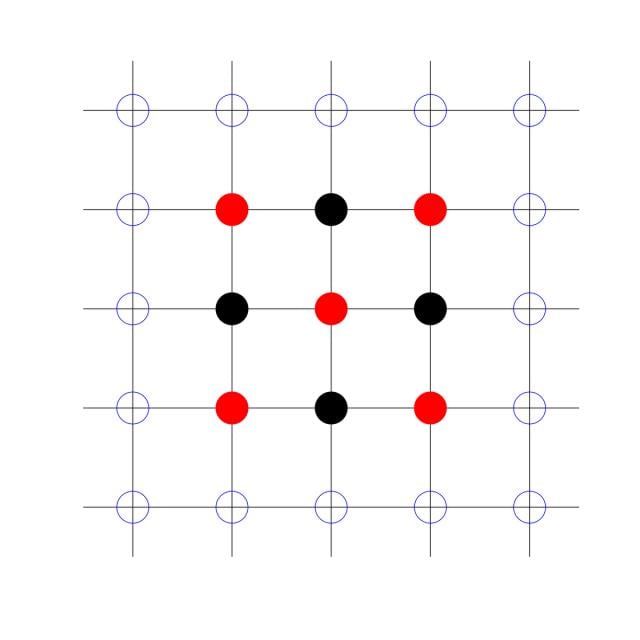MOOC List is learner-supported. When you buy through links on our site, we may earn an affiliate commission.

MOOC List is learner-supported. When you buy through links on our site, we may earn an affiliate commission.
What You Will Learn
- MATLAB and Scientific Computing
- Root Finding and Numerical Matrix Algebra
- Quadrature and Interpolation
- Numerical Solution of Ordinary and Partial Differential Equations
Syllabus
WEEK 1
Scientific Computing
This week we learn how to program using MATLAB. We learn how real numbers are represented in double precision and how to do basic arithmetic with MATLAB. We learn how to use scripts and functions, how to represent vectors and matrices, how to draw line plots, how to use logical variables, conditional statements, for loops and while loops. Your programming project will be to write a MATLAB code to compute the bifurcation diagram for the logistic map.
WEEK 2
Root Finding
Root finding is a numerical technique to find the zeros of a function. We learn the bisection method, Newton's method and the secant method. We derive the order of convergence of these methods. A computation of a Newton fractal is demonstrated using MATLAB, and we discuss MATLAB functions that can find roots. Your programming project will be to write a MATLAB code using Newton's method to compute the Feigenbaum delta from the bifurcation diagram for the logistic map.
WEEK 3
Matrix Algebra
Matrix algebra done on the computer is often called numerical linear algebra. When performing Gaussian elimination, round-off errors can ruin the computation and must be handled using the method of partial pivoting, where row interchanges are performed before each elimination step. The LU decomposition algorithm then includes permutation matrices. We introduce operation counts, and teach the big-Oh notation for predicting the increase in computational time with larger problem size. We show how to count operations for Gaussian elimination and forward and backward substitution. The power method for computing the largest eigenvalue and associated eigenvector of a matrix is explained. Finally, we show how to use Gaussian elimination to solve a system of nonlinear differential equations using Newton's method. Your programming project will be to write a MATLAB code that applies Newton's method to the Lorenz equations.
WEEK 4
Quadrature and Interpolation
In the first part of this week, we learn how to compute definite integrals---also called quadrature. We begin by learning the basics of quadrature, which include the elementary formulas for the trapezoidal rule and Simpson's rule, and how these formulas can be used to develop composite integration rules. We then learn about Gaussian quadrature, and how to construct an adaptive quadrature routine in which the software itself determines the appropriate integration step size. We conclude this section by learning how to use the MATLAB function integral.m. In the second part of this week we learn about interpolation. Given a sample of function values, a good interpolation routine will be able to estimate the function values at intermediate sample points. Linear interpolation is widely used, particularly when plotting data consisting of many points. Here, we develop the more sophisticated method of cubic spline interpolation, to be used if the sample points are more sparse. Your programming project will be to write a MATLAB code to compute the zeros of a Bessel function. This requires combining both quadrature and root-finding routines.
WEEK 5
Ordinary Differential Equations
This week we learn about the numerical integration of odes. The most basic method is called the Euler method, and it is a single-step, first-order method. The Runge-Kutta methods extend the Euler method to multiple steps and higher order, with the advantage that larger time-steps can be made. We show how to construct a family of second-order Runge-Kutta methods, and introduce you to the widely-used fourth-order Runge-Kutta method. These methods are easily adopted for solving systems of odes. We will show you how to use the MATLAB function ode45.m, and how to solve a two-point boundary value ode using the shooting method. Your programming project will be the numerical simulation of the gravitational two-body problem.
WEEK 6
Partial Differential Equations
This week we learn how to solve partial differential equations. This is a vast topic, and research areas such as computational fluid dynamics have many specialized solution methods. Here, we only provide a taste of this subject. We divide the numerical solutions of pdes into boundary value problems and initial value problems, and apply the finite difference method of solution. We first show how to solve the Laplace equation, a boundary value problem. Two methods are illustrated: a direct method where the solution is found by Gaussian elimination; and an iterative method, where the solution is approached asymptotically. Second, we show how to solve the one-dimensional diffusion equation, an initial value problem. The Crank-Nicolson method of solution is derived. We also show how to use the Von Neumann stability analysis to determine the stability of our time-integration schemes. The final programming project will the solution of the two-dimensional diffusion equation using the Crank-Nicolson method.
MOOC List is learner-supported. When you buy through links on our site, we may earn an affiliate commission.
MOOC List is learner-supported. When you buy through links on our site, we may earn an affiliate commission.
